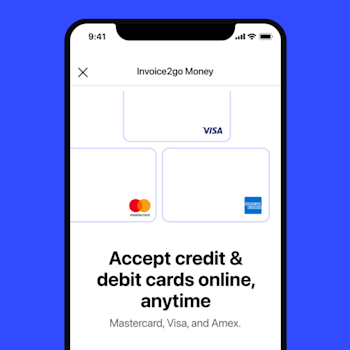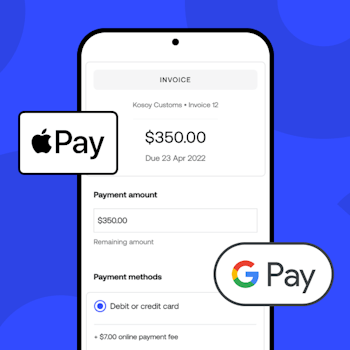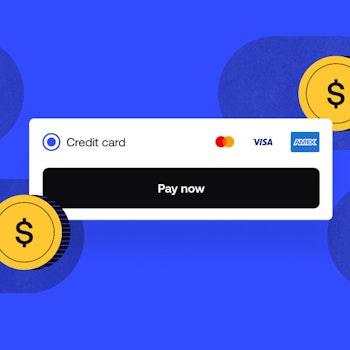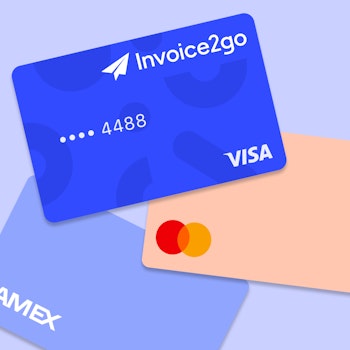
5 rebranding examples your small business can learn from
Rebranding your business is not a decision to be taken lightly. It can mean uprooting all the marketing work you’ve done and going all-in on a new brand identity with new messaging, new logo design, and sometimes a new name entirely.
And if we’re honest, most people don’t like change. Even when it’s warranted, customers tend to develop an emotional attachment to their favorite brands, and some might jump ship in response to a rebrand that’s not done the right way.
There are plenty of examples of rebranding gone wrong—remember MySpace? (“My what?” you say? Exactly.) And how about the Gap logo debacle of 2010? These are two massively successful companies with a dedicated global audience. What could they have done incorrectly?
If we could point to one thing, it’s the fact that neither company considered their audience. They created their rebranding strategy based on the idea that they needed to modernize but left their people behind in the process.
In the case of MySpace, it went from being the world’s first and most popular social media website to a slick-looking, user-unfriendly interface that didn’t have an ounce of the charm and community it built itself on. It needed to change, but nobody was down with the direction they took. Most users jumped ship for bluer pastures (Facebook) and didn’t look back.
As for the Gap, their new logo redesign lasted all of one week. The customer backlash was intense and heated—it didn’t take long for the company to cave and revert to the original design. Essentially, they were attempting to modernize solely through visual means—and they did not take the customer along for the ride. The Gap did not consult the people that mattered most.
Rebranding examples to inspire your own business rebranding strategy
While there are inherent risks with rebranding, the time may come when you need to update your brand identity. It could be that your customer base has changed or that you’ve added new services and eliminated others. Maybe your industry has changed, and it’s time to adapt. (In fact, we’ve recently updated our branding!)
At Invoice2go, a Bill.com company, it’s our mission to support the success of small business owners with resources and inspiration. We’ve recently updated our brand to reflect that we’ve evolved into so much more than invoicing software.
So today, we’re sharing helpful takeaways from 5 rebranding examples—what drove them to consider the change, how they did it, and what happened next. The goal is to give you inspiration for your brand strategy so that you make incredible connections with those you do business with.
1. Dunkin’ maintains brand recognition and leads with what they do best
Dunkin’ is a popular fast service restaurant chain specializing in coffee and donuts. The company, formerly known as Dunkin’ Donuts, rebranded in September 2018, modernizing its image to align with its customer’s needs and wants.
Challenge
The idea was to modernize the customer experience and focus on what they do best—serve great coffee, fast. The core philosophies remained, but they wanted to establish a blueprint for the future that reflected the needs and interests of their current audience.
They identified a strong desire for mobile accessibility, modern design, a hip store atmosphere, and a wider range of drink options.
Action
The new name was an abbreviated version of their former brand and a tip of the hat to their loyal customers, most of who have been calling it “Dunkin’” for years. Visually, they used a similar logo design with colors and fonts that had sustained them over time. It was new and fresh, but it was also joyful and familiar.
They simplified their menu while adding high-demand drink choices like cold brew, iced teas, and nitro coffee. Their new store design made ordering faster and more convenient with mobile pick-up areas and mobile order drive-through lanes, allowing these customers to jump the line.
Results
Even though they’ve been around since 1950, Dunkin’ is more popular and more relevant than ever. The updated brand identity was a massive success, giving Starbucks a good run for its money as the preferred coffee brand in the Northeastern United States. They listened to their customers, delivered on their wish list, and put a renewed focus on the things they did best.
Key takeaway
You may not need to completely change your entire brand. Sometimes just updating your logo, messaging, or customer experience can have an incredible impact on your customer base. For example, more customers these days want to order online and pay digitally. Being able to accommodate them can help you win more business. Are there other ways you could update your image or experience?
2. Fiverr’s updated brand identity celebrates community
Fiverr is a freelance marketplace initially launched on the idea that you can get just about anything on their site for $5. As it grew, it became the home base for thousands of highly skilled freelancers, and the look and feel of the site needed to reflect that.
Challenge
Fiverr still wanted to retain some of its more quirky, funky, and fun atmosphere while upgrading the user interface to perform like an up-market eCommerce site. The idea was to focus more on the sellers, providing them with beautiful imagery to build stunning profiles in line with modern web design standards.
The goal was to stay true to their legacy, save the best from the past, and enhance the look and feel with new brand elements and visuals.
Action
Fiverr is one of the top online marketplaces for freelance talent. Positivity is in their DNA, so maintaining that was a priority. During the decision-making process, they engaged their community and employees to better visualize their relationship with the brand and how they felt about it.
The new logo repositioned the Fiverr circle as a period at the end of the word. To function in smaller spaces, like mobile phones, and for icons, they abbreviated the logo to “fi.”
Fiverr used actual community members as models for their photography to highlight their deep relationships with their sellers and enhance their visual brand identity. All their photography is authentic, reflecting the values they communicate.
Since their product is digital, they also emphasized their user experience, creating brand elements like gig cards and visually striking search bars.
Results
With their commitment to saving the best from the past, and engaging their community in the journey ahead, Fiverr continues to be familiar, friendly, and dynamic for both sellers and buyers. Everything about their rebranding supports their catchphrase—changing the way the world works together.
Key Takeaway
By updating their visual identity and brand voice, Fiverr was able to position themselves as a serious tool for freelancers and small business owners. They succeeded because they focused on their customers, not themselves. How does your brand convey your business identity? Are there ways you could update it to make stronger connections?
3. Slack comes into its own with a new logo
Slack is a workplace communication app that’s grown to become one of the world’s favorite ways to connect teams. As the platform matured, they needed a more straightforward and cohesive look.
Challenge
The original logo consisted of 11 colors and a symbol (the hashtag) angled at precisely 18˚ – which was incredibly easy to get wrong.
If it was placed against any other color than white, or if the angle wasn’t “just so,” it didn’t look right. They created different iterations of the design for various functions, but the result was confusing. Ultimately, you want your logo to be instantly recognizable, no matter where it’s placed. So that was the goal.
Action
Slack needed a cohesive visual identity that wasn’t too far off from the original. They didn’t want to upset their audience but show the brand’s evolution.
The new logo is derived from the old one. It consists of two fundamental geometric shapes to represent communication that can be extracted to use as graphic elements. As for the color palette, it’s reduced from 11 to four colors, ensuring instant recognizability wherever it’s placed.
Result
The new logo and emblem were not remarkably different from the original in many ways. However, it did exactly what it was intended to do. It underscores Slack’s primary mission of connectivity and communication and demonstrates a maturity that will propel them forward into the future.
Key takeaway
Keep your branding simple and straightforward. Ensure your visual identity looks good wherever it’s placed and that it’s easily recognizable.
4. Pepsi’s century of reinvention is a continuing saga
Pepsi has been a contender for almost 130 years. Through it all, they have weathered many changes—not least of all was rebranding from their original name, Brad’s Drink. The brand has gone through many changes through the decades, and it wasn’t immediately a runaway hit.
But eventually, with some innovative marketing and their eyes keenly focused on their audience, Pepsi emerged as one of America’s most iconic brands.
Challenge
Around the 1880s, pharmacists were in the business of formulating sodas as medicine. Coca-Cola and Dr. Pepper were two competing products of the time, and the creators of Brad’s Drink needed a snappier name if they wanted to compete.
They changed the name to Pepsi Cola in 1898; it was a derivative of the word “dyspepsia,” which is another way of saying stomach ache.
Coca-Cola, unfortunately, won the cola war, and Pepsi went bankrupt. They were subsequently purchased by another company, went bankrupt a second time, and were purchased again. They needed to find a way to set themselves apart from Coca-Cola and did this initially by changing their packaging.
Action
In 1933, Pepsi decided to package its product in a 12-ounce bottle and sell it for the same price as Coca-Cola. Sitting next to Coke’s 6.5-ounce bottle on store shelves, the value was clear, and Pepsi was back in business.
However, the two brands still had very similar logos—each had red cursive against white. It wasn’t until 1950 that Pepsi introduced blue as a third color. Their distinctive red, white, and blue caps embraced the spirit of post-war patriotism. They were appealing subliminally to a well-defined audience – and it worked.
Pepsi continued to promote the brand as the better value; “More bounce to the ounce” was their catchphrase. But it wasn’t just about getting more product for the money; their campaigns were all about fun. Pepsi portrayed itself as a drink for “those who think young,” meaning, loosely at least, that you weren’t with the times if you drank Coca-Cola.
Pepsi dropped “cola” from its name in 1962. The bottle cap was flattened and became the logo, and they left the swoopy cursive script behind in favor of a bold, stamp-like sans serif wordmark. They were targeting a younger demographic, and the “Pepsi Generation” was born.
Results
Pepsi continues to challenge the status quo, constantly reinventing its visual identity to reflect the changing ideals of its audience. Pepsi has always been viewed as a modern brand that evolves with the times, but one thing remains consistent—the product inside the package.
New flavors and trends may come and go, but the cola at the heart of it all is something their customers can always count on.
Key takeaway
Branding isn’t something you set and forget. As culture and technology shift, your brand will need to adapt to keep up with the times. Your ability to adapt over the years is essential to the long-term success of your company
5. 1-800-Flowers embraces the culture of innovation
1-800-Flowers started as a single flower shop and grew into one of the most recognizable brands in North America. They were one of the earliest eCommerce companies and continue to embrace technology to grow, transform, and reinvent themselves to meet customers’ needs.
Challenge
Transformation is in this company’s DNA. From the start, founder Jim McCann was always looking for ways to serve more customers in more places. Whenever he had the opportunity to do something that aligned with this goal, he did it.
His first foray into rebranding was when he acquired the toll-free phone number 1-800-Flowers, which became the company name. It was easy to remember and helped McCann expand his empire from one local shop to 10—but that was just a taste of what was to come.
1-800-Flowers debuted on CompuServe in 1992 and launched on AOL as their exclusive floral merchant partner in 1994. In 1995, their eCommerce site went live. In 1999, they went public as 1-800-FLOWERS.COM, Inc. All the while, McCann’s primary focus was always front-and-center: satisfying their customers’ gifting needs in any way possible.
As a company that prides itself on being ahead of where customers are going next, they continue to seek opportunities to form one-on-one relationships with customers and franchisees alike. They are always ahead of the technological curve, and these days, they’re more dedicated than ever to philanthropic activities and improving the lives of their customers, employees, and franchisees.
Adding chat and voice technologies to their websites has made it easier and more accessible to shop. They were also an early adopter of voice commerce (voice ordering through Alexa, for example) and are continually investing in enhancing how their audience engages with their brands.
Results
It would be difficult to list all the milestones along the 1-800-Flowers timeline. Today, it is a multi-brand organization that wants to be with you on all occasions. Suffice to say, there is no limit to where this organization will go, as long as it aligns with the company’s mission.
Key takeaway
Embracing the future and being open to change are essential to the development of your business. Maintaining personal connections with your customers is also crucial to success no matter how big or small your business is.
In conclusion, there is one thing these five successful rebrands have in common: they let the customer and their culture lead the way. A rebrand is not a small undertaking, and it’s vital to ensure your efforts reflect—and respect—your audience and their values. Put your customers first, and you’ll never go wrong.
How could you update and strengthen your branding? Are you currently working on rebranding efforts? Check out our free course with branding expert Nakita Pope to learn how to get more brand recognition and create a company identity that makes stronger connections with customers.
Related Articles

How to accept credit card payments on Invoice2go in 3 simple steps

Accept payments online via Apple Pay and Google Pay

Must-not-miss write-offs as you wrap up 2022 year-end finances

5 ways accepting credit and debit card payments helps your business stay resilient

4 easy ways to increase cash flow today

What is Small Business Saturday and why is it important?
The features and surprising benefits of a well-designed packing slip

